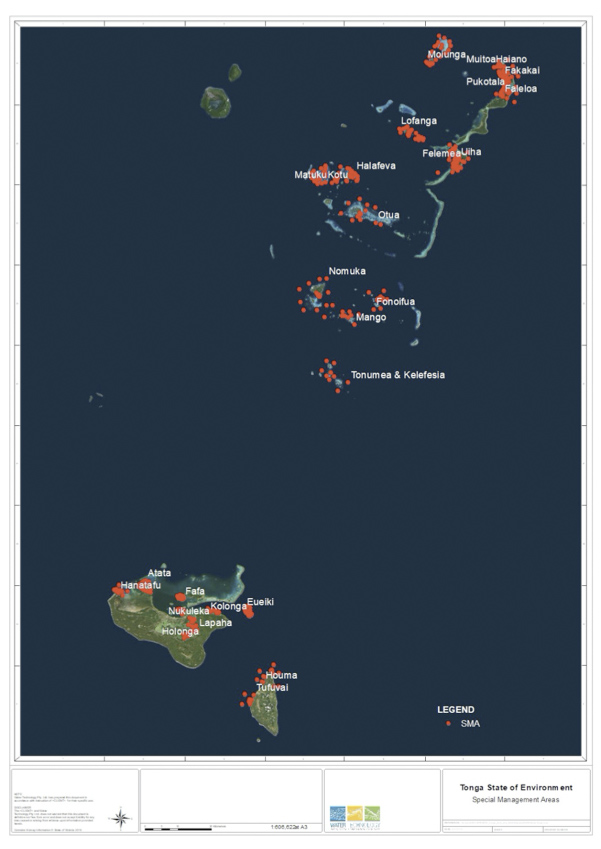Tonga’s Ministry of Meteorology, Energy, Information, Disaster Management, Environment, Climate Change and Communications (MEIDECC) and the Secretariat of the Pacific Regional Environment Programme (SPREP) have developed a report on the state of the environment in the country. The report identifies Special Management Areas (SMAs) as a key indicator reflecting the efforts made by government agencies and local fisheries communities to proclaim their interests in utilizing marine resources, develop incentives to sustainably manage these resources, and recognize that adequate community engagement is essential for the effective management of fisheries.
The ‘Tonga State of Environment Report 2018’ (SOE Report), approved by the Tongan Government on 5 June 2020, uses the Drivers, Pressures, State, Impact and Response (DPSIR) model to describe the state of the environment in the country, and analyzes its most recent “conditions and grades” in relation to local and global goals. The 2018 SOE Report is the first of its kind for Tonga and is a key document for informing environmental planning and decision making in the country.
Commenting on the report, Kosi Latu, SPREP Director General, commended the commitment of the Government of Tonga through MEIDECC and national stakeholders in the successful completion of the first SOE Report for Tonga. He further highlighted the valuable information presented in the report to inform stakeholders and decision makers on the state of the environment and concrete actions required for improving the health of the environment.
The 2018 SOE Report highlights that collaborations between the Ministry of Fisheries and coastal communities in the implementation of SMAs have contributed to the protection of marine species and helped ensure that local communities maintain their ability to provide for themselves.
Tonga’s SMAs, most of which are located within the reef zones near the islands of Tonga, carry restrictions or bans on fishing activities to allow for the recovery of stocks.
Yet the report states that challenges remain. For example, all species within SMAs are affected by overfishing, there are inadequate rules for rebuilding fish stocks as communities increase their catches to generate cash income, and pressure from commercial fisheries can be too much for local communities to cope with. The report stresses the need to address these challenges by developing economic opportunities outside fishing to alleviate the pressure on SMAs while meeting communities’ financial demands at the same time. According to the report, a lack of resources for monitoring, which is carried out by the Ministry of Fisheries and communities themselves, both in terms of funding and staff, can hinder this work.
The 2018 SOE Report outlines plans by Tonga’s Ministry of Fisheries to increase the number of SMAs with 60 new sites in order to tackle growing environmental challenges, and states that future expansion and more resources will improve the positive effects of SMAs on the marine environment. [Publication: Tonga State of the Environment Report 2018] [Publication Landing Page] [Tonga Environment Data Portal] [Pacific Environment Portal]

* * *
This policy brief was authored by Dina Hestad, Ph.D., Thematic Expert for SDGs and Small Island Developing States.
This story was made possible with funding support from the Government of Sweden through the UN Environment Programme (UNEP) and was developed with the Secretariat of the Pacific Regional Environment Programme (SPREP) using the Pacific Environment Portal, which enables users to find, access, and use regional and national data. The portal has been developed by the regional UNEP-GEF Inform project executed by SPREP, which has established national environment data portals in 14 Pacific island countries to help address the challenges of storing and accessing data. The online database of information and datasets aims to help improve decision making and reporting on the environment.